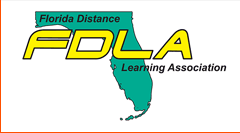Changing Education Landscape: Teaching and learning with virtual reality, augmented reality, and mixed reality in higher education
Start
1-30-2019 1:45 PM
End
1-30-2019 2:30 PM
Short Description
Our higher education landscape continues to be shaped by the emergence of new technological advances. One question on the horizon is: How will the technology be aligned with the key principles of teaching and learning? This presentation will focus on innovative trends, connect virtual reality advances to innovative and scalable encounters in higher education; and share resources for the design and implementation of virtual, augmented, and mixed reality in higher education and how to locate open source content.
Abstract
Our higher education landscape continues to be shaped by the emergence of new technological advances. However as these technological advances take place, one question that needs to be asked is how will the technology be aligned with the key principles of teaching and learning. According to Jowallah, Bennett & Bastedo (2018 p12), the implementation of technology within education must consider a “fusion of pedagogy and technology within a balanced framework.”
The authors go on to suggest that “The proliferation of technological advances has changed the education landscape. In many instances, many seminal theorists for teaching and learning seem to have been forgotten (p.11).” Therefore, virtual reality, augmented reality and mixed reality engagements must be designed to maximize teaching and learning in higher education. This presentation will focus on the following four major objectives: (1) to articulate innovative trends in the use of virtual reality, augmented reality and mixed reality in higher education; (2) connect virtual reality advances to innovative and scalable encounters in higher education; (3) share information on finding open source content for virtual reality, augmented reality, and mixed reality; and (4) share resources for the design and implementation of virtual reality, augmented reality, and mixed reality in higher education.
References
Jowallah, R., Bennett, L., and Bastedo, K. (2018) Leveraging the Affordances of Virtual Reality Systems within K-12 Education: Responding to Future Innovations. Florida Distance Learning Association (3), 1-14
Format
Concurrent Session
Institutional level targeted
Higher Ed
Changing Education Landscape: Teaching and learning with virtual reality, augmented reality, and mixed reality in higher education
Our higher education landscape continues to be shaped by the emergence of new technological advances. However as these technological advances take place, one question that needs to be asked is how will the technology be aligned with the key principles of teaching and learning. According to Jowallah, Bennett & Bastedo (2018 p12), the implementation of technology within education must consider a “fusion of pedagogy and technology within a balanced framework.”
The authors go on to suggest that “The proliferation of technological advances has changed the education landscape. In many instances, many seminal theorists for teaching and learning seem to have been forgotten (p.11).” Therefore, virtual reality, augmented reality and mixed reality engagements must be designed to maximize teaching and learning in higher education. This presentation will focus on the following four major objectives: (1) to articulate innovative trends in the use of virtual reality, augmented reality and mixed reality in higher education; (2) connect virtual reality advances to innovative and scalable encounters in higher education; (3) share information on finding open source content for virtual reality, augmented reality, and mixed reality; and (4) share resources for the design and implementation of virtual reality, augmented reality, and mixed reality in higher education.
References
Jowallah, R., Bennett, L., and Bastedo, K. (2018) Leveraging the Affordances of Virtual Reality Systems within K-12 Education: Responding to Future Innovations. Florida Distance Learning Association (3), 1-14

